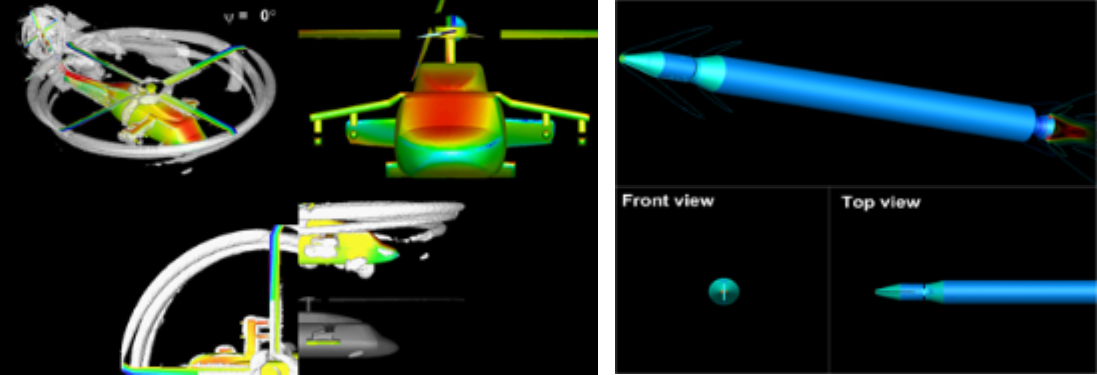Research Areas
Focus Research Areas
With the aim of developing the skills and knowledge needed for future prosperity, the Department of Aerospace Engineering at KAIST has defined five areas of focus that will serve as the foundations for rich cross-disciplinary collaborations with other national and international institutions.
To provide significant technological and societal impact and to cultivate next-generation engineers and scientists, we explore cutting-edge science and technology in Airborne Vehicle Technology, Space Systems, Aerospace Information and Intelligence, Aerodynamics and Structural Mechanics, and Propulsion and Energy.
Focus Research Areas
- Airborne Vehicle Technology
- Aerospace Information and Intelligence
- Propulsion and Energy
- Space Systems
- Aerodynamics and Structural Mechanics

- Focus Research Areas
-
- Airborne Vehicle Technology
- Aerospace Information and Intelligence
- Propulsion and Energy
- Space Systems
- Aerodynamics and Structural Mechanics
Airborne Vehicle Technology
Airborne Vehicle Technology applies to the design and development of aircraft, helicopter, UAV, etc. Major topics related to this field are as follows.
- Aerodyanmics of fixed-rotor aircraft, helicopter, UAS and guided weapon
- New aircraft concept with improved crash-durability
- UAS, Drone, missile guidance and control
- rban Air Mobility (UAM) design

Aerodynamic analysis of aerospace system using CFD (left: UH-60 helicopter, right: KSLV-I rocket)

Missile guidance and control

Structural design for shock resistance

Integrated control for hypersonic vehicle flight
Space Systems
Research on space launch vehicle, satellite development and utilization, and space science and explorations has been conducted in the field of space systems engineering. Principal research topics in this field include the following:
- Development of Sounding Rockets
- Development of CubeSat Systems (Successful communication for the first time in Korea in 2017): Little Intelligent Nanosatellite of KAIST (LINK)
- Research on Global Navigation Satellite System (GNSS) and GNSS-based Remote Sensing
- Autonomous Landing and Hazard Avoidance Technology (ALHAT)
- Development of Multipurpose Flight Analysis Program for conceptual design of space vehicles

development of Sounding Rocket

Development of Nanosatellite and CubeSat

GNSS performance analysis and GNSS-based Ionospheric study

Research on multi-target rendezvous optimization for Space Debris Removal

Satellite Jitter Analysis and Reduction technology
Aerospace Information and Intelligence
The research area of aerospace information and intelligence covers high-precision guidance and control of aircraft/spacecraft, machine learning and artificial intelligence, multi-agent systems, etc. Topics include the followings:
- mission assignment and cooperative control for multi-agent systems
- machine learning-based mission/trajectory planning and scheduling of intelligent UAV systems in the dynamic environment
- safety improvement of aircraft take-off/landing based on the high-precision GNSS system
- whole life-cycle integrity monitoring of aircraft/spacecraft
- aerospace communications and data processing
- Bang, Hyochoong
-
Ahn, Jaemyung
- Lee, Jung-Ryul
-
Lee, Jiyun
-
Lee, Chang-Hun
- Choi, Jihwan
- Choi, Han-Lim

learning-based multi-UAV mission/trajectory planning

distributed collaboration of aerial sensor networks

(left) Smart Hangar / (right) structure integrity monitoring systems

Deep learning neural networks for aerial image data processing

mission assignment and scheduling in the satellite constellation
Aerodynamics and Structures
In the field of aerodynamics and structures, research has been conducted on fluids, structures, and the interactions between them. Representative research topics in this field include the following:
- Development of aerodynamic analysis/design programs based on aligned and unaligned grids that have been used in major national aerospace R&D projects
- Numerical/experimental studies on various low/high-speed flow phenomena
- Modeling and numerical/experimental research on the behavior of aerospace structures in extreme environments
- Multi-functional smart structure research with various functions such as structural safety monitoring, radar absorption material research, active vibration control, etc.
- Kwon, Oh Joon
- Kim, Chun-Gon
-
Park, Gisu
- Lee, Sang Bong
- Lee, Jung-Ryul
-
Jeon, Eunji
- Cho, Hansohl
- Han, Jaehong

Fluid-Structure Combined Analysis of Wind Blades

Various high-speed aerodynamics (including propulsion) ground-tests

Visualization of aerodynamics in the low Reynolds number region

Space object collision; Protection structure design study

Radar Absorption Structure Research
Propulsion and Energy
The propulsion and combustion group conducts fundamental and applied research in a wide range of areas, including monopropellant rocket thrusters, high-pressure cryogenic combustion phenomena, unsteady spray combustion dynamics, combustion instabilities in lean-premixed gas turbine engines, underwater/ramjet propulsion, solid propellants, and modern energetic materials. The numerical program specializes in large eddy simulation of combustion phenomena. Our research programs are devoted to improving our understanding of the reacting and non-reacting flow physics that control the performance of rocket and air-breathing engines. Main research subjects are as follows:
- Development of earth-based lander testbed for space flights and mono- and bipropellant thrusters for attitude control of upper stage space rockets
- Lean-premixed hydrogen combustion technology for low-emission gas turbine engines (combustion dynamics, flame structures, stabilization mechanisms, exhaust emissions)
- Robust and massively-parallel numerical simulations for unsteady reacting flows in gas turbines and rocket thrust chambers
- Kwon, Sejin
-
Kim, Kyu-Tae
-
Park, Gisu
- Shin, Donghyuk

Bipropellant thruster / Hypergolic propellant combustion / Hybrid propellant combustion test

Flame dynamics in lean-premixed carbon-neutral hydrogen combustion systems

High fidelity numerical simulations for turbulent flame dynamics
Three Strategic Initiatives: “By 2035 / by KAIST AE”
We selected three strategic initiatives whose goals are achievable by leveraging the core competencies in the focus areas. We can lead these initiatives and create significant impacts; at the same time, the initiatives will help strengthen and expand the core competencies we have in the focus areas.
By 2035, Deep Space Exploration by KAIST AE
Development of smallsats and upper stage rocket
Deep-space communication system

KAIST Rounding Rocket (Mock-Up) by Perigee Aerospace, a Start-Up Founded by a KAIST AE student
By 2035, Urban Air Mobility System by KAIST AE
Development of core subsystems, System integration
Urban air traffic management

Hover-Bike Project (Six KAIST AE faculty members are participating, PI: Prof. Hyo-Choong Bang)
By 2035, Hypersonic Transportation System by KAIST AE
Conceptual and preliminary design of hypersonic vehicles
Ground testings

Shock Tunnel: Hypersonic Aerodynamics Lab.


